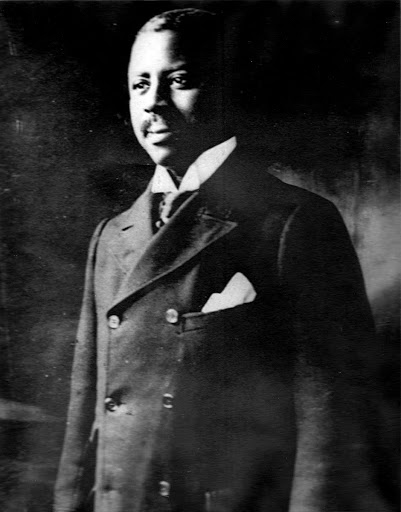Fifteen years after Robert Turner began working for the Hearst family, in the early part of 1898, Phoebe Hearst welcomed a visitor at her ranch home in Pleasanton, California, a homeopathic physician from Michigan, Edward C. Getsinger. He talked to her not only about homeopathy – one of her interests – but he also told her a little about the new religion he had embraced, the Bahá’í Faith. He recommended, however, that Mrs. Hearst meet with his wife Lua, a spirited young woman, one of the earliest American Bahá’ís, and someone who knew the Bahá’í teachings better than he did. Lua’s subsequent meeting with Phoebe several weeks later, described here in an unverified account from the writer and actor O.Z. Whitehead, had a profound impact on Mrs. Hearst – and on Mr. Turner:
During this trip, she [Lua] called on Mrs. [Phoebe] Hearst and spoke to her about the Bahá'í Faith ... Robert Turner let Mrs. Getsinger into the house and showed her into a finely furnished sitting-room. After giving her a gracious welcome, Mrs. Hearst asked her guest to sit down next to her on the sofa. When he had served the tea, Robert stood near to them. In a most moving manner, Mrs. Getsinger spoke to them both about the Baha'i Faith. Surely on this occasion and those that followed Robert listened eagerly to Mrs. Getsinger and as a result did all he could to learn about the Faith. — Some Early Bahá'ís of the West, p. 15

Robert apparently did listen eagerly, and soon after Mrs. Hearst’s meetings with the Getsingers he began studying the Bahá’í Faith. He learned more about Bahá’u’lláh’s teachings while accompanying Mrs. Hearst and a group of friends sojourning in Europe, deepening his knowledge of the Faith by attending Bahá’í classes given by Mrs. Getsinger at Mrs. Hearst’s flat in Paris. Apparently Robert Turner the butler and his wealthy employer Phoebe Hearst fell in love with the Bahá’í teachings around the same time, because both of them became Bahá’ís during that summer of 1898.
While Robert Turner studied the Bahá’í Faith, he quietly made history. As he attended the Bahá’í study classes taught by Lua Getsinger in Paris, Robert set a remarkable precedent by joining a number of wealthy white women in that study group, all of them interested in learning more about the Bahá’í teachings. In this account from author and historian Kathryn Jewett Hogenson’s history of the early American Bahá’ís titled Lighting the Western Sky, she provides a description of what his attendance at those classes meant:
This list [of class attendees] is significant not only because it contains the names of a number of people who would adorn the pages of the early history of the Bahá’í Faith in the West, but because it demonstrates the liberality of the group. After the social reforms of the twentieth century, it is difficult to appreciate fully how revolutionary it was for a group of white Americans from the upper social strata of society to sit and study with an African American butler in 1898. This seemingly simple act required putting aside deeply ingrained racial and class prejudices. From the beginning of the British colonization of the Americas, the enslavement of Africans was America’s “original sin” that had ultimately been resolved through the massive bloodletting of a civil war little more than 30 years earlier. The price the United States paid in lives and treasure to end slavery is beyond description. … Robert probably had childhood memories of slavery and the war. In the 1890s, the wounds were far from healed. Even among those enlightened enough to feel great sympathy for the former slaves and their progeny, there remained deep-seated feelings that black Africans were an innately inferior people. In fact, there was a widely-accepted school of thought that the races of mankind were separate species: this was touted as scientific fact in a popular science book co-written by the primary professor of science at Harvard University. Robert, too, would have had to overcome any lingering feelings of resentment toward the white race for the unspeakable crimes it had committed against his own people. Aside from racial prejudices, it was unheard of at the time for a servant to sit down with his employer’s friends and family as an equal to study religion, or to study anything together. This little group of the young and the middle-aged, women and men, black and white, master and servant, represented the dawn of a revolution in human interaction, brought about by the coming of God’s Messenger for this day, Bahá’u’lláh. – pp. 70-71.
